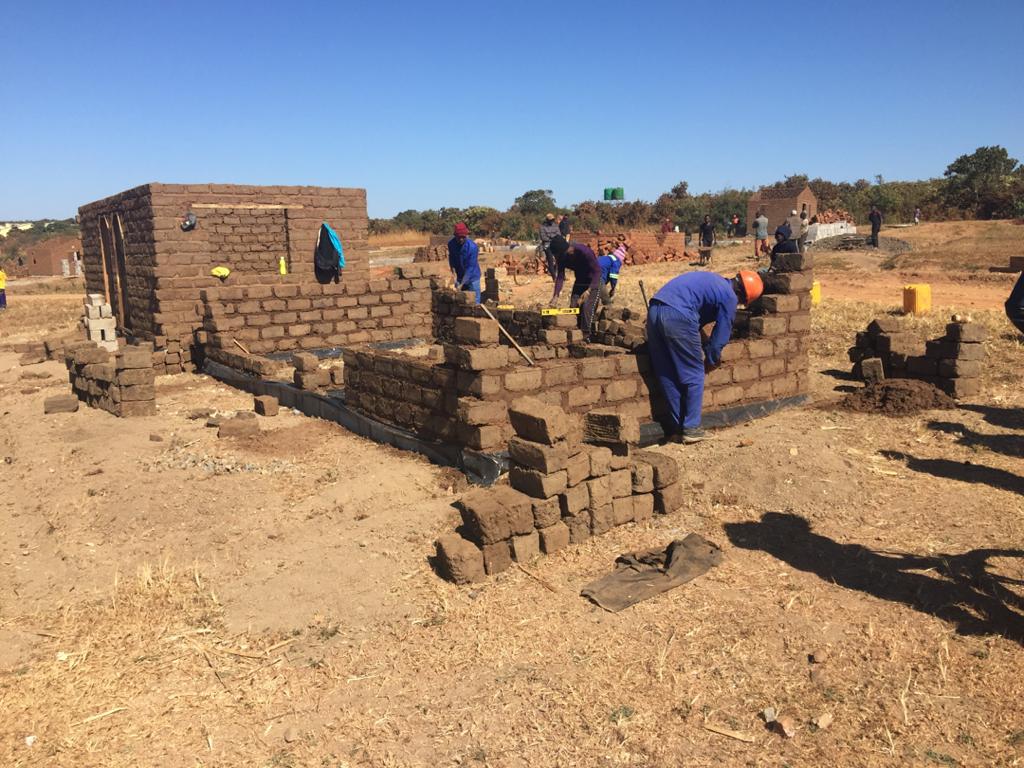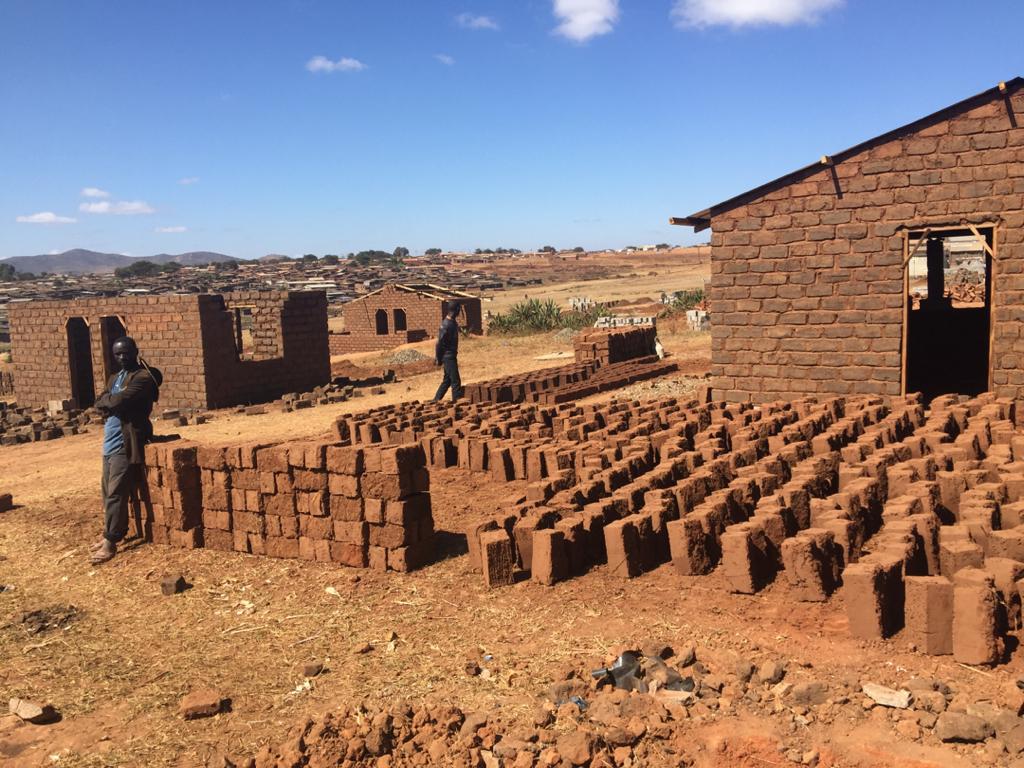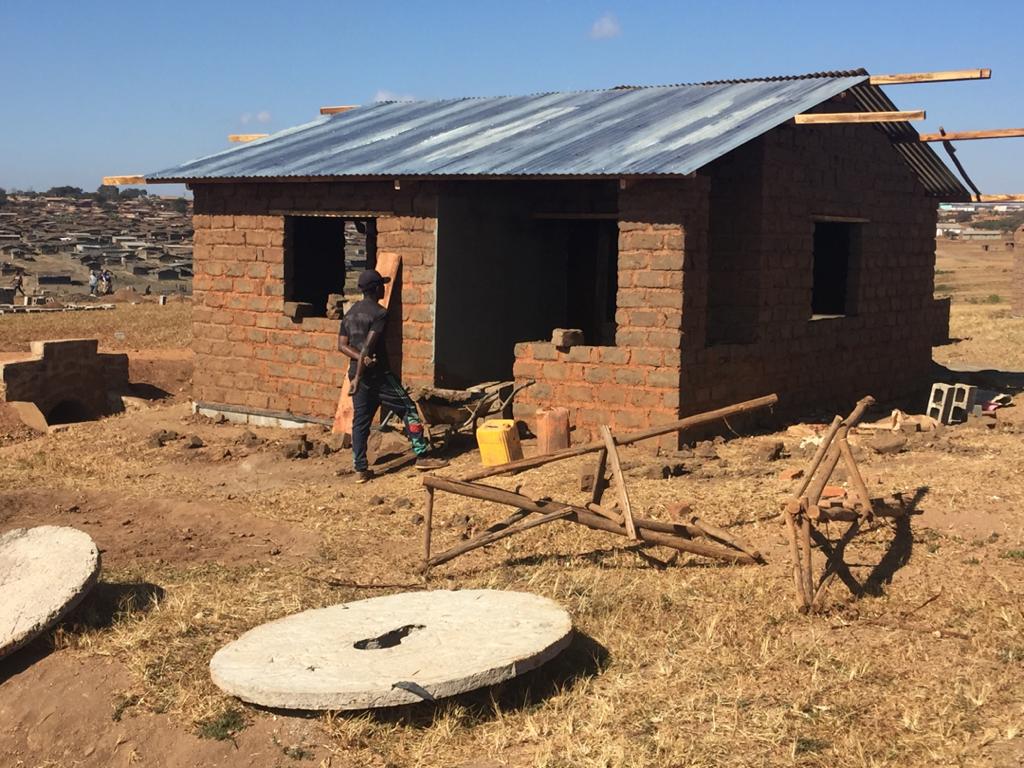by gerhard gross
Werner Schellenberg started planning for an extension of Dzaleka Refugee Camp in 2019 after relocation of the entire camp was rejected by UNHCR. Initially Malawi Government intended to transfer Dzaleka Camp to the Northern Region near Karonga (see report in Nyasa Times of 13th Sept. 2017)
The extension area lies to the north of Dowa Road just opposite the present camp.
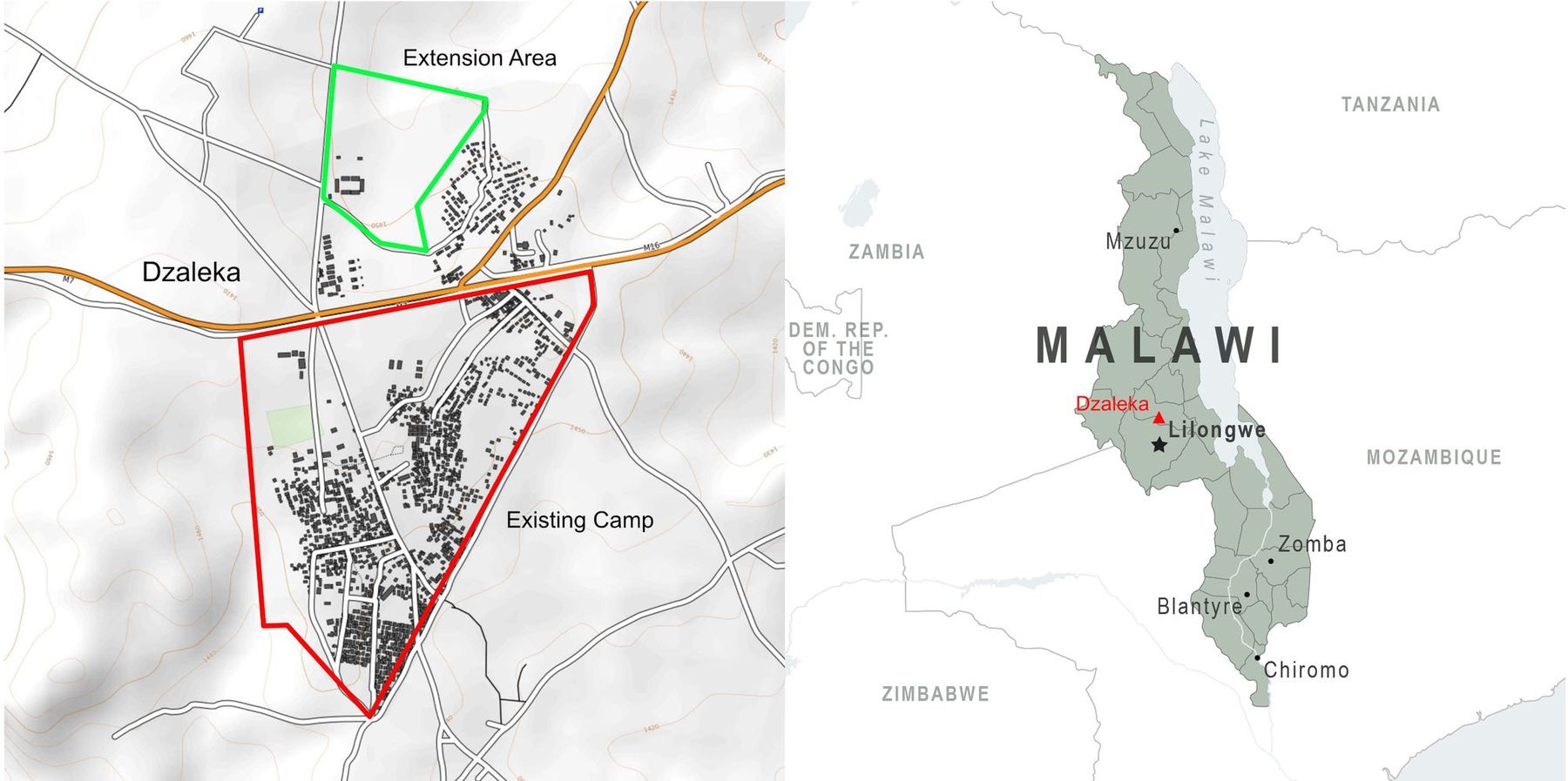
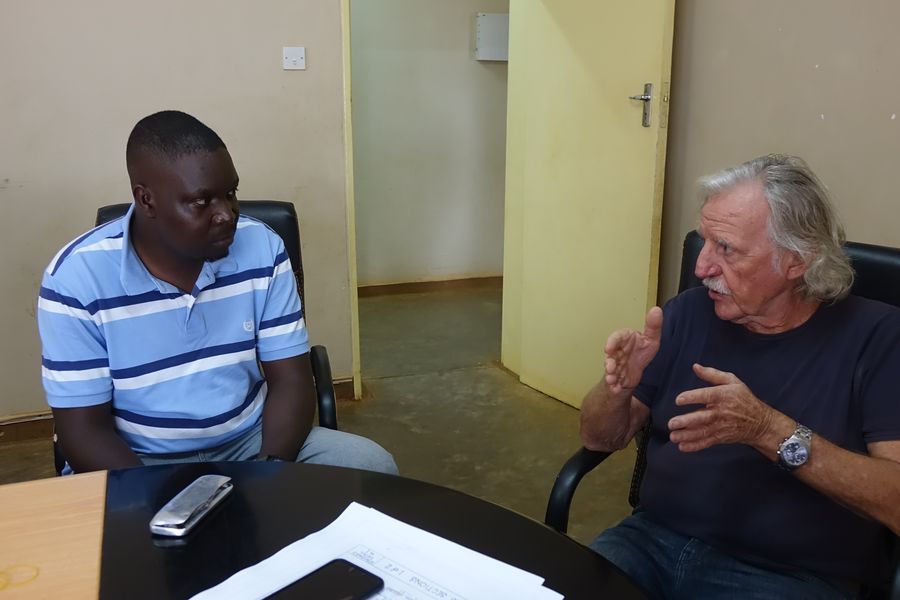
Discussion with Dowa District Works Officer at Camp HQ in April 2019 – foto © studio karonga
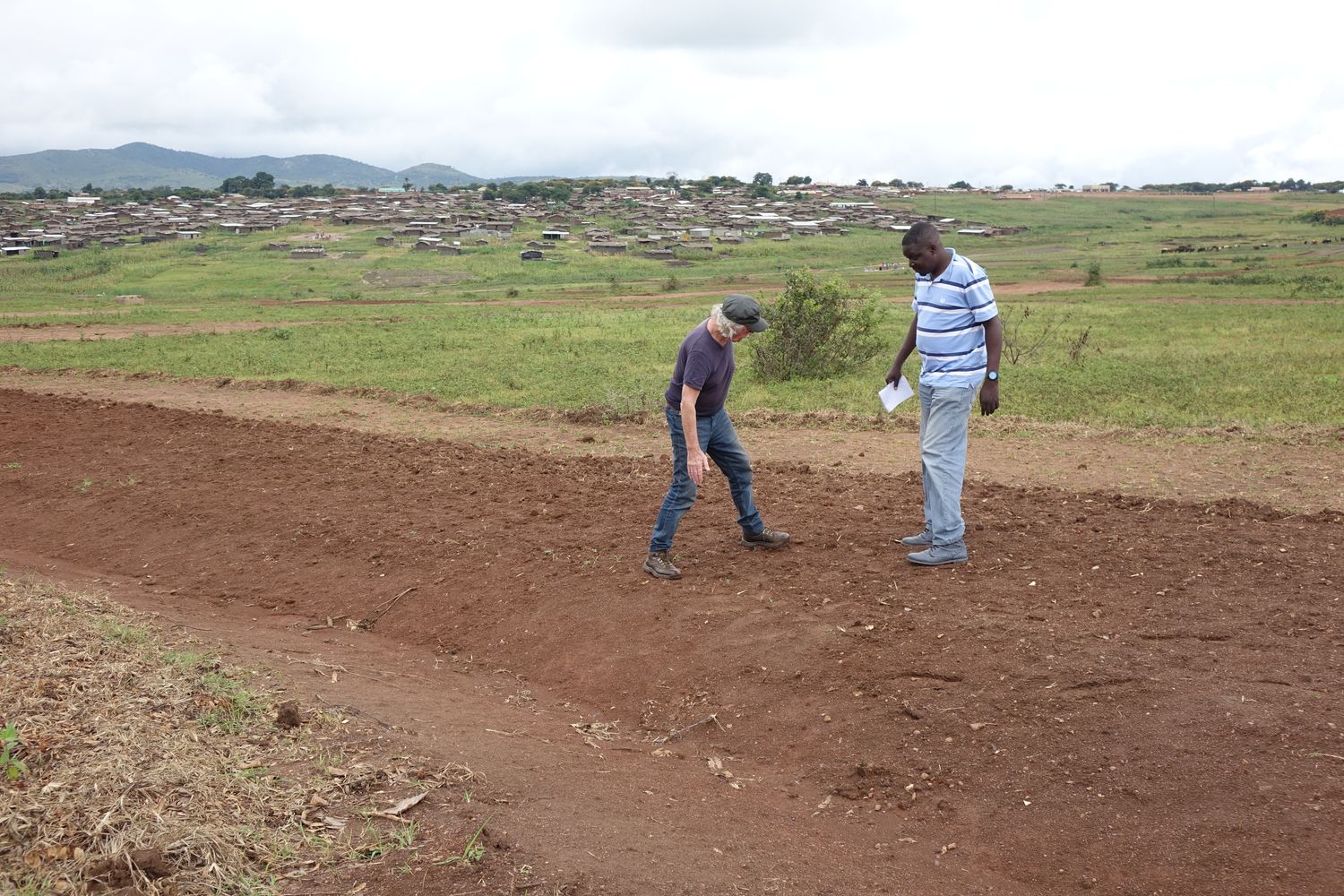
Instructions for the Dowa District Works Officer on how to shape the road profile – foto © studio karonga
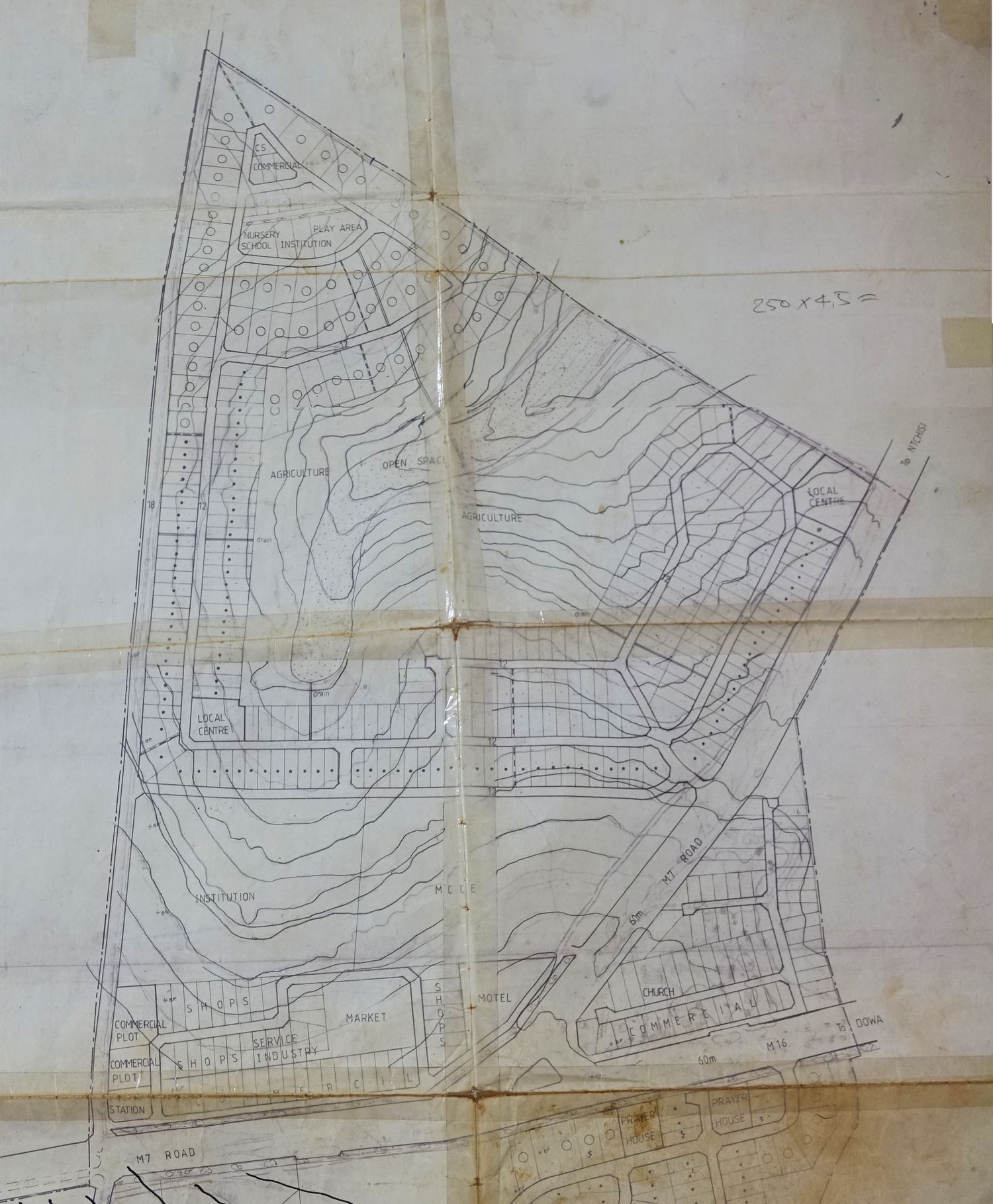
Analysing an old extension plan of 1996 (above) Schellenberg changed the layout to better take into account the topography of the area (below).
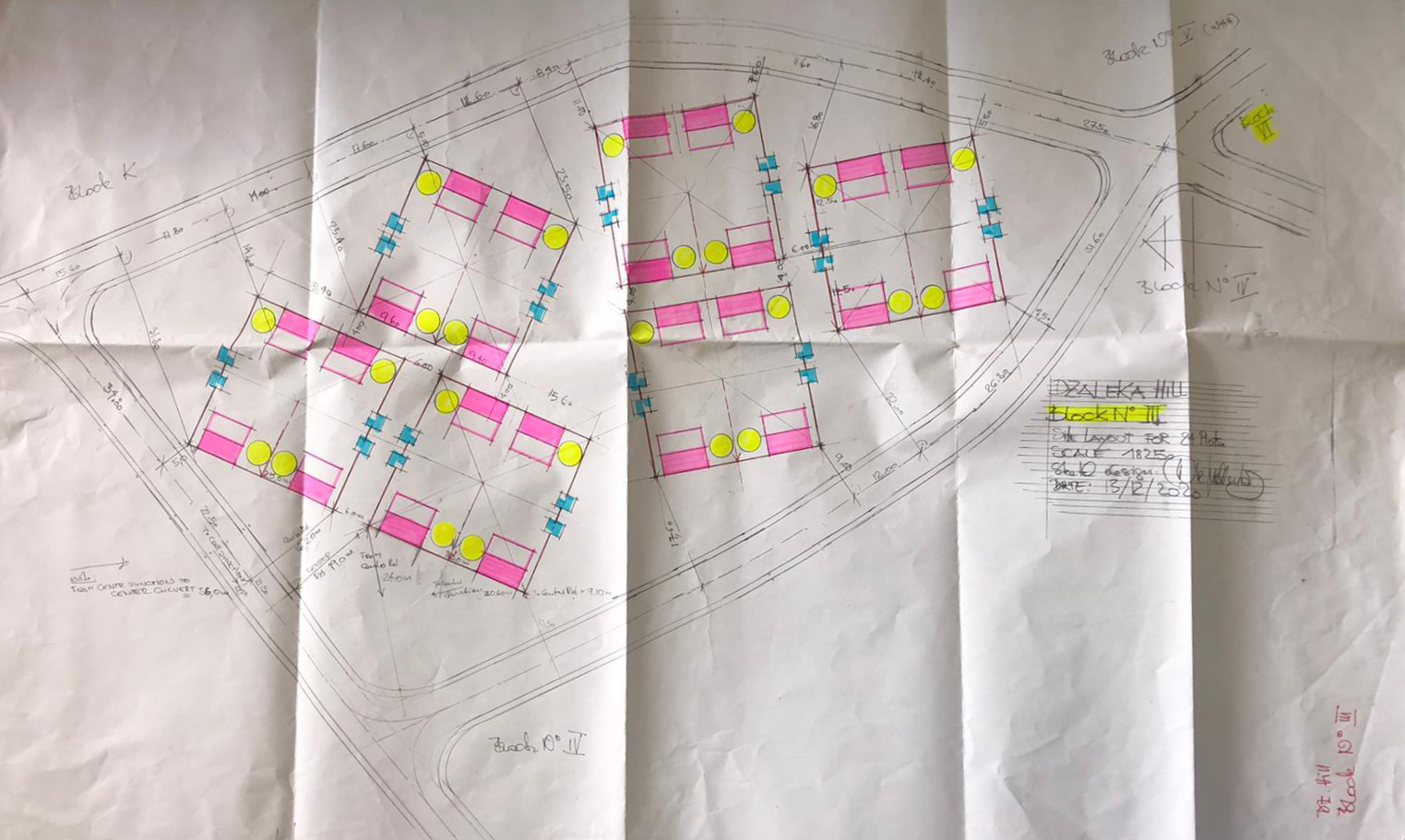
The layout provides for small neighbourhoods with clusters containing 4 family plots 25 x 25 meter each allowing to accomodate 4 shelter, 4 wash units and 4 kitchen units.
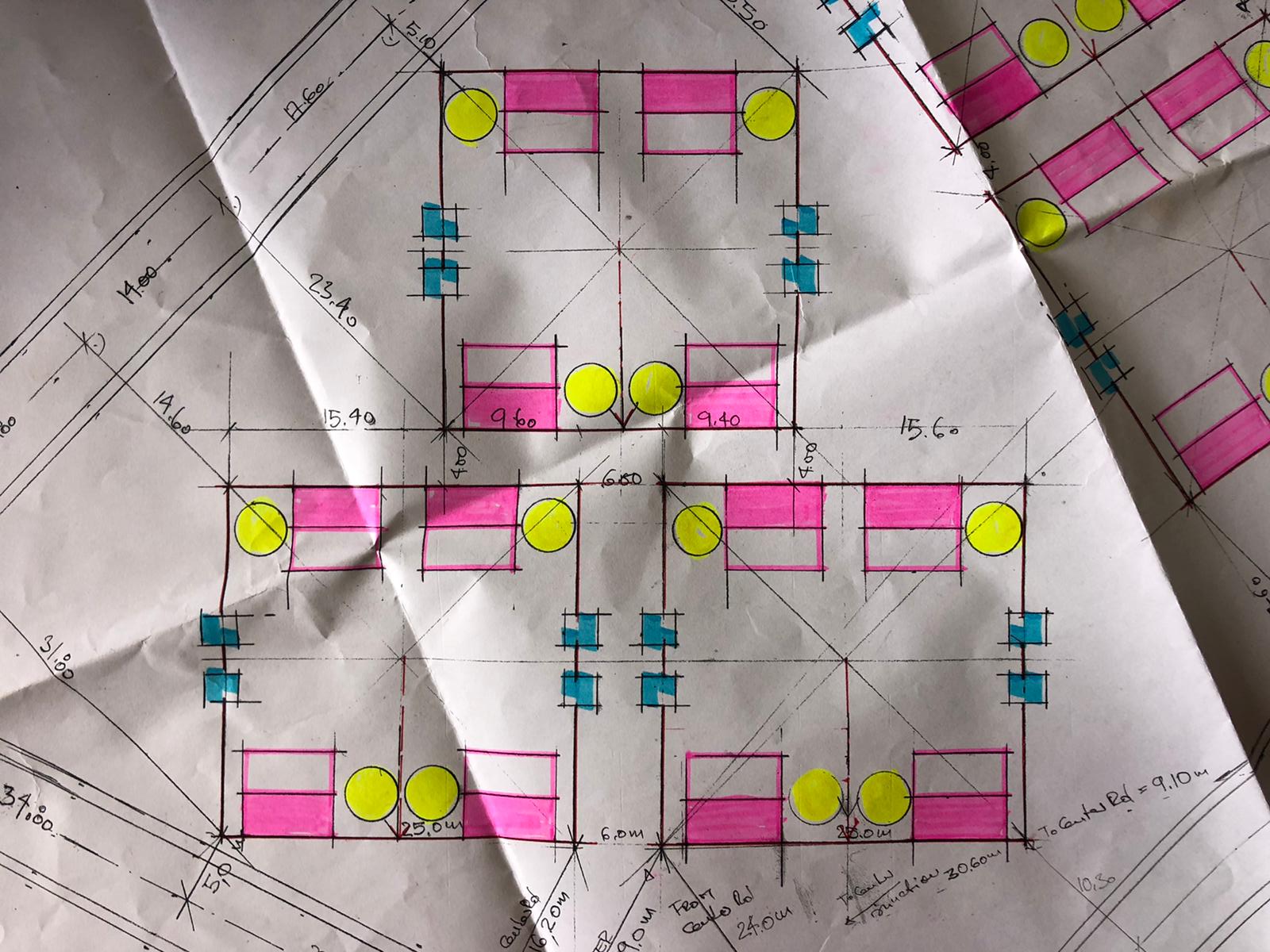
In a note Werner sent me in September 2020 he explained his concept for the extension area as follows:
„Shelter material support for a two room semi permanent shelter. Beneficiaries produce Adobe Blocks, construct and extend the house by themselfes. One extended family plot of 25 x 25 meter allows to accomodate 4 shelter, 4 wash units and 4 kitchen units. One community consists of 4 x 4 extended family units, i.e. 16 x 5 persons. One shelter kit consists of cgi sheeting, roof timber, windows, doors, hollow blocks and cement for foundation works. Total cost per shelter kit = 1600 USD. Nr. of shelter structures completed since may (beginning of dry season) 350 units at Katubza (area north of the existing camp). Other infrastructure works started on Dzaleka hill for additional 500 shelter. Objective: to contribute to Dzalekas decongestion, covering of housing shortfalls and improvement of shelter and physical settlement standards in terms of shelter and development space per person.“
Very typical for Werner’s approach is the concept of core-shelters (core-houses) giving families a quick start and allowing them to expand as need arises and funds permit. Werner already used this concept in his emergency shelter concepts for camps in Afghanistan and Pakistan.
I recall a visit to newly independent Zimbabwe in 1980 when Werner together with the Rural Growth Centre Team of Malawi visited the fast expanding township of Seki (today: Chitungwiza) where we first saw an example of a core-housing scheme.
Katubza Camp Extension – construction progress in September 2020 – fotos © werner schellenberg
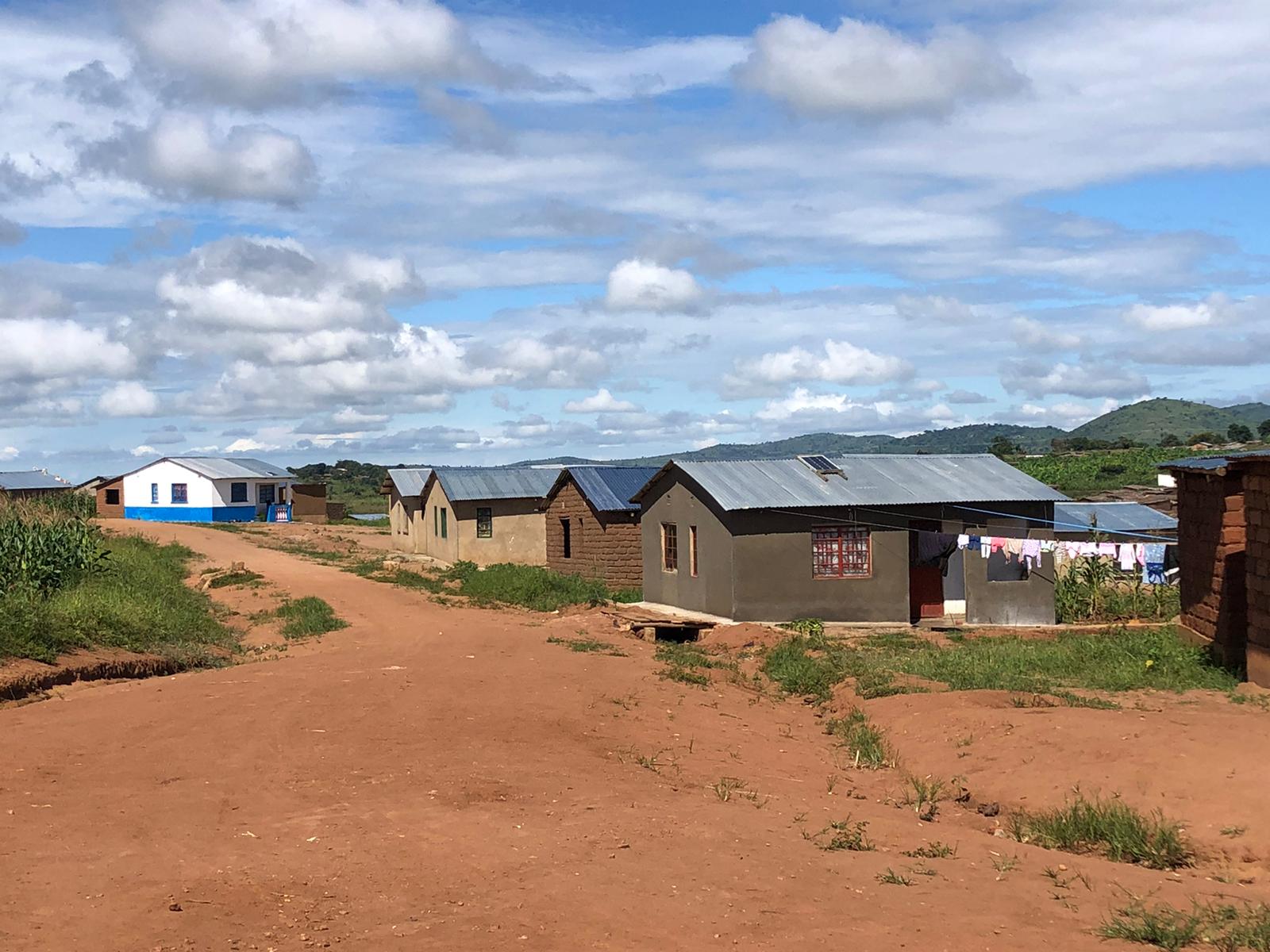
Refugees have moved to the houses in Katubza in March 2021 – foto © gianna schellenberg
